The release of any product (as well as the provision of services) is associated with preliminary production investments. In modern economic theory, the totality of the corresponding types of costs is considered to be cost. What are the approaches of Russian economists to the study of this phenomenon? What is the cost in terms of business performance? What are the key conditions for its optimization?
Cost: theory
First, we will determine what the cost price is. Under this term, modern economists understand the financial expression of the costs of the enterprise, directly related to the release, as well as the sale of goods. The fact is that almost any production includes the cost of raw materials, electricity, fuel, payment of labor compensation (and the accompanying social obligations), compensation for depreciation, etc. The total cost of the company is the total cost of production.
Cost and profit
Reducing the corresponding costs of releasing goods directly affects the profit of the organization. The most important criterion here is to maintain the proper level of quality of the products. If it does not meet the current needs of consumers and customers, then demand will fall, and there will also be problems with revenue.
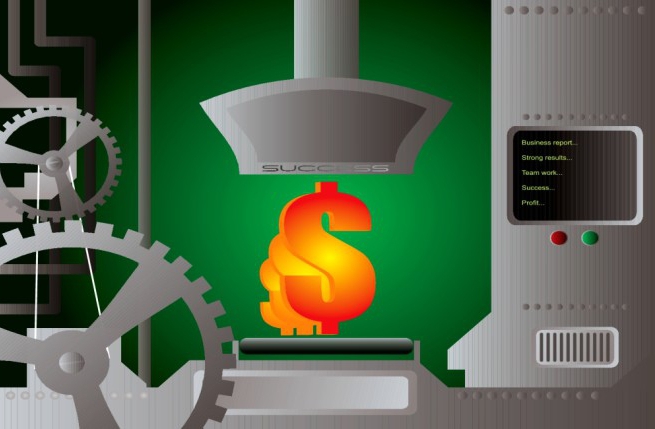
Thus, extremely important criteria for business performance are the methods used by the company to calculate cost. Many economists consider it, however, not a quantitative, but a qualitative indicator. Cost, therefore, reflects the aggregate range of resources that the company possesses.
Cost components
What is the cost in terms of its constituent components? Modern economists include the following types of costs:
- the costs associated with the preparation of production facilities, their launch;
- costs reflecting investments in the production of goods, the use of certain technologies, the implementation of managerial decisions;
- costs associated with the company's investments in the development of a scientific and technical base, various kinds of development projects, research;
- costs reflecting the service component of the product release process;
- investments in improving working conditions;
- salary, vacation pay, social security contributions;
- insurance payments;
- acquisition of fixed assets, depreciation;
- purchase of raw materials.
What are the costs of production costs in a typical production structure occupy the largest share? This, according to many economists, is just the same purchase of raw materials and materials to be further processed. In some industries, this expenditure item exceeds 80% of total costs. In some cases, the costs of the factory’s production include the idle time of the factory (production of defective goods, various technological downtimes, etc.).
What is not included in the cost?
What, in turn, is not an integral part of the cost, based on modern economic theories? It is customary to relate to such components, in particular, the costs and lost profits associated with the execution of projects suspended on objective or independent of the will of the company's management. Also, the cost of production, as a rule, does not include the resources spent on maintaining mothballed capacities.
The cost of releasing goods usually does not include costs associated with lawsuits, fines and other sanctions provided by law. Some economists also prefer not to include in the cost of production written off or non-recoverable receivables.
Cost classification
Costs that form the value of the goods, it is customary to classify in two categories. There are homogeneous cost components (these may include, for example, staff salaries), and there are complex ones (they may reflect, in particular, the cost of purchasing equipment).
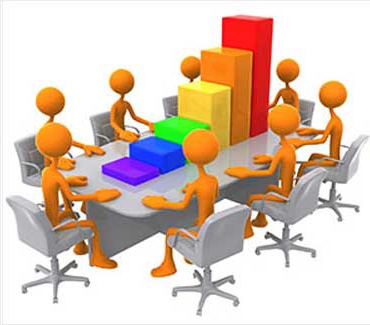
There are costs of a constant nature, the value of which does not directly depend on the number of manufactured goods (including rent for the premises), but there are variable costs which, in turn, are proportional to the pace of production (procurement of raw materials, payment of personnel - new personnel are hired).
Analytical aspect
How is the analysis of production costs carried out? Several key indicators are used. Among those, for example, costings (total), the number of costs per one commodity unit, as well as one ruble of products sold.
The first indicator reflects the total amount of costs recorded by the company in the course of involving all types of production capacities, payment of related services (engineering, installation), and the establishment of new goods. This figure can be divided by the number of units of output, and also be the basis for calculating the coefficient that is correlated with one ruble of the selling price of the product.
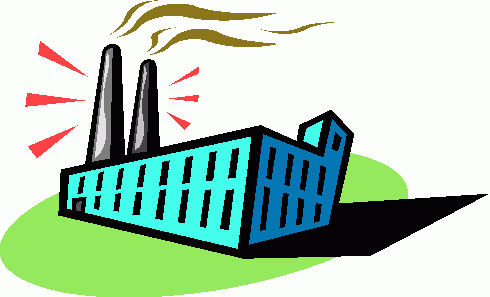
Cost components can be classified according to a number of other criteria. This may be the composition of costs (expenses for a specific area of the company’s activities - the workshop, research department, retail, etc.), the duration of the period of use of funds (month, quarter, year and longer intervals), type of reporting (current , forecasting, etc.).
Costing aspect
How is costing done when the task is to calculate ratios for specific items of expenditure? That is, when the total indicator in the form of estimates does not interest us, we need an analysis of costs relative to their specific purpose. Very simple.
First, we define the objects of calculation. These can be single products, product groups, and if we are interested in the cost of services, we specify the types of services to be studied. Then we select the calculation criteria (as a rule, this is a kind of natural indicator - kilogram, meter, etc.), and they may not coincide in content with the object in the form of a single copy of the product. But this is completely normal - just the same grouping of individual goods, based on the same applicability of the calculation criteria, is much more convenient from the point of view of cost analysis than operating with individual units of production.
Main expense items
Now, in fact, about standard cost items that form the full cost. There can be a lot of criteria here. If we calculate production costs, then we can adhere to the following standard cost items:
- procurement of materials (raw materials);
- staff salary;
- purchase of auxiliary materials (semi-finished products), payment for the services of contractors;
- depreciation costs;
- maintenance costs;
- advertising;
- development of distribution channels;
- packaging, delivery, logistics.
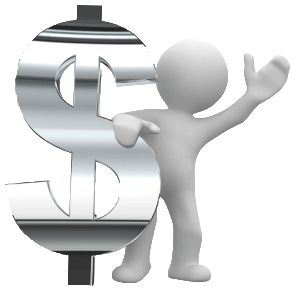
In principle, this is all that we talked about at the beginning of the article. However, we highlighted these criteria to see that each of them can be the basis for calculating the cost of production in relation to an indicator that reflects the analyzed volumes of output - tons, meters, etc.That is, we can, for example, calculate how much it will cost us to purchase raw materials for the production of 100 meters of metal pipes. And also what will be the personnel costs necessary for the manufacture of such a volume of products. How much we will invest in advertising in order to sell these meters - if you wish, you can calculate such a coefficient.
How to reduce the cost?
Every business strives to become as profitable as possible. An analysis of the cost of production by an enterprise usually comes down to subsequently taking steps to reduce costs and increase business efficiency. Which ones? Experts identify the following areas of work:
- implementation of resource saving methods (lean use of raw materials);
- labor optimization (reduction of downtime);
- mastering new production technologies;
- measures designed to reduce the cost of sales (search for new, more efficient distribution channels);
- reduction, if necessary, of the administrative apparatus;
Usually, all these measures are taken in an integrated manner. But it is always possible to allocate a higher priority for each of them.
Accounting methods
Cost accounting is a complex process involving the use of a wide range of, mainly, statistical methods for analyzing production processes. The purpose of such activities is to compile as such a list of necessary costs, without which it will not be possible to produce marketable products, as well as rationing relevant resources in order to optimize their spending.

As we said above, in some industries, the bulk of the costs are raw materials. Therefore, work in the field of accounting in enterprises is often concentrated around this component of cost. Experts identify three main methods of its implementation:
- Documentation
- inventory;
- factory line efficiency analysis.
The first method is based on fixing on paper such nuances as standards for the consumption of raw materials, as well as possible deviations from them during production. In some cases, the documents reflect the conditions under which the consumption of resources outside the norms is acceptable or, conversely, undesirable, as well as information about the potential for replacing some types of raw materials with others in order to optimize production processes.
An inventory is, as a rule, a calculation of available resources, carried out at a certain interval — a shift, day, week, or other period that the company’s managers decide to establish as the base.

Analysis of the effectiveness of the factory line is a kind of continuation of the documentation method. But in this case, not only indicators of deviation from the norms are revealed, but also the most probable reasons for this. As they are resolved, it is expected that the identified problems with overspending can be resolved. This area of work is directly aimed at reducing the cost of production of goods.
Calculation of the total cost
We turn to the practice of calculating key numbers. What is the cost, we determined. Now we need to find out how enterprises calculate it. Experts identify three main methods by which the cost of the enterprise is calculated. Namely:
- counting machine hours;
- accounting method;
- direct costing.
What is each method individually?
If we are talking about calculating machine hours, it is calculated how much resources are needed to produce the product, based on the cost of equipment, the materials processed by it, as well as the staff salary. The accounting method is the determination of which production costs (and the cost of related services that are not directly related to the shop floor) occupy the largest percentage and which are the lowest relative to staff salaries (in percent).
Direct costing involves working with as many parameters as possible, which form the cost of production.Sometimes it is calculated how much resources are expended, not from the point of view of such an indicator as the cost of a unit of goods, but in terms of how much of the cost falls on a separate stage of its assembly or processing.
The economic nature of costs
Some economists prefer to classify costs based on their affiliation with individual economic elements. That is, here we mean the calculation of the specific gravity for each variety of costs in the general formula that forms the cost of the finished product. Costs in this case are classified by their distinctive economic properties. The essence of which usually depends on the industry in which the factory operates.
There are, for example, particularly labor-intensive segments of industry - in them the bulk of the costs are related to the payment of staff. There are resource-intensive industries - in them, respectively, the predominant part of the costs is the purchase of raw materials. There are also energy-intensive segments, "capital-intensive" ones - equipment is especially actively wearing out in them.
Consider the cost factors of the three most common economic categories of costs - raw materials (materials), salary and depreciation.
Raw materials and cost
Material costs reflect the cost of resources, components, semi-finished products purchased from third-party suppliers, payment of possible outsourcing services to contractors related to the delivery of raw materials. In some cases, it may be a question of including in the cost of work related to the search for optimal suppliers (deduction of commission to procurement managers).
Depending on the policy of building production processes, costs in this area may decrease, based on the potential for the sale of unspent materials. If we are talking about the fact that the company provides itself with raw materials, extracting it, for example, from the bowels of the earth, then the cost of extraction of the required resource is calculated.
Material costs are most often formed by a combination of costs:
- purchased raw materials, materials, as well as those components that undergo subsequent processing with the help of the facilities that the factory possesses;
- works (or services) of a production nature and performed by third-party firms;
- raw materials of natural origin (land, water, wood) and associated rents;
- various types of fuel;
- electricity.
In some cases, undersupply of resources in volumes reflecting the actual amount of natural loss is included in material costs.
As such, the cost of raw materials is determined on the basis of market prices offered by suppliers, commissions and associated costs (such as, for example, compensation for brokers, payment of customs duties, etc.).
Salary and cost
The foundation of any business is personnel. Therefore, personnel costs can be one of the most voluminous, in relative terms, cost component. It all depends, as we said above, on the segment in which the enterprise operates. Depending on the industry, personnel costs can be 10%, and 40% and more than 90% of all costs.
Modern economists use two methodologies for calculating the costs associated with staff remuneration. According to the first of them, the corresponding costs must be divided into two types - those that are directly related to the monetary compensation of the work performed by people, and those that reflect obligations to social funds.
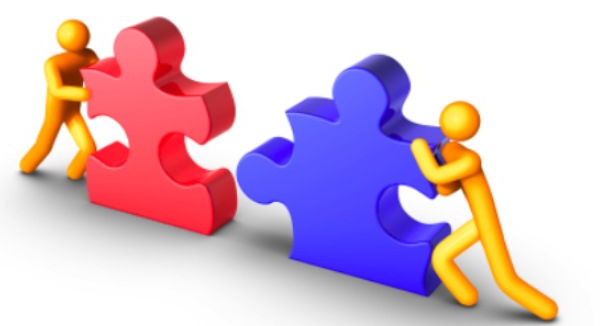
Proponents of the first concept focus on the fact that salaries and payments to the FIU, the Social Insurance Fund and the MHIF are almost always interconnected. When accounting calculates labor compensation for a factory employee, it unconditionally transfers about 30% of its salary and bonus to the above social funds. And also pays 13% personal income tax.Therefore, according to this thesis, it is not quite correct to separate salaries and deductions to the PFR, FSS and MHIF.
Supporters of the second concept note that such trends as outsourcing (transfer of labor functions to another organization) and outstaffing (an invitation to work for employees officially registered in another company) are becoming more widespread. In this case, the factory does not pay any contributions to social funds.
Of course, this scheme is attractive to many businesses, as it can significantly reduce the cost, which depends largely on the cost of staff remuneration. Profits from the use of outsourcing and outstaffing tend to grow. One way or another, in this case we are not talking about deductions to the PFR, FSS and MHIF. Therefore, in the cost structure, these items are more appropriate to consider separately from the costs of compensation of labor functions.
With regard to concept number two, some economists recommend that the costs related to outsourcing and outstaffing be considered material, nevertheless, we recall the item on settlements with contractors. However, many experts find a counterargument to this thesis, believing that in very many industries more than 50% of the staff consists of specialists hired as part of outstaffing, and a significant part of the work performed is outsourced.
The main types of expenses in terms of salary are salaries, bonuses, incentive payments as well as the costs associated with indexing labor compensation. As for maternity and other social payments - they are carried out by state funds. But the company can still bear the costs associated with accounting support for this type of obligation. Therefore, the category of “salary”, as a rule, also includes such types of costs (although their volume in financial terms is usually much lower in comparison with the categories of obligations indicated above).
Cost and depreciation
Any equipment wears out over time. As a rule, the cost of manufacturing a product using new machines is lower than when using those that have a long life: materials are used more efficiently, less scrap, and possible downtime due to repairs. Therefore, in some cases, it is more economical to upgrade production facilities than to work on obsolete ones. However, not always - sometimes it’s better to invest in repairs. One way or another, both require financial resources, which form the amortization costs of the enterprise — an integral component of the production process.
The criteria by which an enterprise decides whether to purchase new equipment or repair current equipment are very different. At some factories, standards are set depending on the estimated percentage of fund depreciation. On others, the main criterion is the life of the device, or, for example, the total duration of use of the equipment, which is expressed in machine hours. Everything, as a rule, depends on the industry specifics of production.
other expenses
Some economists distinguish a special economic category of costs - “other expenses”. They, as noted by a number of experts, in terms of individual components, it is quite realistic to combine with other cost classes. But in practice, they often stand out in an independent category. “Other expenses” include the payment of tax and insurance contributions, the fulfillment of environmental obligations, compensation for interest on loans, compensation for communication services, cash settlement services, and repair.








